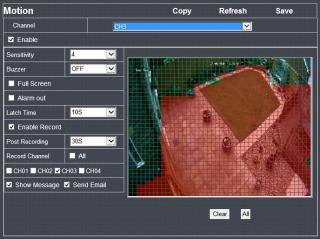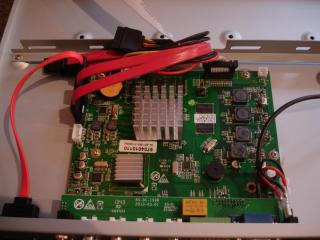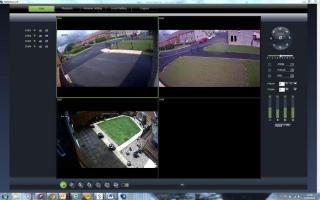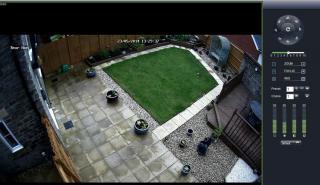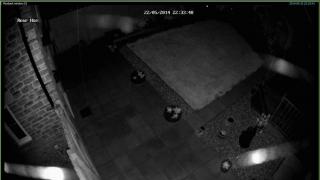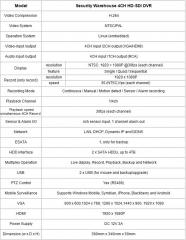
datadiffusion
Global Moderator-
Posts
12,329 -
Joined
-
Last visited
-
Days Won
110
Content Type
Profiles
Forums
Events
Downloads
Gallery
Blogs
Everything posted by datadiffusion
-
So This Is Why My Cameras Wont Show Remotely
datadiffusion replied to 9651's topic in Members Lounge (Public)
Basically you had to look up your IP and if it was shared request it to be unshared should you wish to use dyndns etc... It was only ever used on granny tarrifs i.e. BT Option 1, 1GB max Broadband Only (no TV etc...) -
So This Is Why My Cameras Wont Show Remotely
datadiffusion replied to 9651's topic in Members Lounge (Public)
Nope they even started sharing each dynamic IP with 2 customers at one point, but I believe that has been stopped... http://en.wikipedia.org/wiki/Carrier_Grade_NAT -
So This Is Why My Cameras Wont Show Remotely
datadiffusion replied to 9651's topic in Members Lounge (Public)
Not funny Btw you can still get a single free dyn account by a back door method, again would only use for a mate etc... -
So This Is Why My Cameras Wont Show Remotely
datadiffusion replied to 9651's topic in Members Lounge (Public)
Free service? -
This is an ancient panel as was soon discontinued back in the day AFAIK. The 9955 was similarly discontinued some time ago and is now the RFX08. The 9954 has nothing to do with wireless I'm afraid.
-
BYO teagbags?
-
One of these days Raymond is going to come out on remand, log on to this site and see red!
-
Alarm Co Splicing To Bt Line
datadiffusion replied to infernalsiren's topic in General Telecom Queries
Not saying it wouldn't work, see it all the time, but I thought it would load the line up with parallel inductance? -
Specialist Job Sites For Alarm Engineers
datadiffusion replied to ezki1's topic in Security Job Requests and Vacancies
Is that the one thats since merged with the canal museum? -
Alarm Co Splicing To Bt Line
datadiffusion replied to infernalsiren's topic in General Telecom Queries
Shouldn't be 2 filters on one line. Needs to be connected in series with the filtered output from the VDSL plate and rest of telephones. Only thing connected to the unfiltered line should be the DSL modem. -
Enduser Access To Support/software
datadiffusion replied to Heathy65's topic in !!..DIY Installers..!!
Make sure your IP address is England, Wales or NI based when looking. -
Enduser Access To Support/software
datadiffusion replied to Heathy65's topic in !!..DIY Installers..!!
That's for a reason, the ion40 has wireless on board (only 1 way), 16 zones without an expander needed and ethernet on board. It is however completely unexpandable after that. But does have 16 on board outputs via plugon loom, as well as the 4 via terminals. -
Pa Buttons In The Isles In Sainsburys?
datadiffusion replied to matthew.brough's topic in Members Lounge (Public)
All a bit much for a Wednesday -
Didn't Know The Police Did The Vetting?
datadiffusion replied to Ronnie's topic in Companies Falsely Claiming Approval
Seen more whippets in Bath last week than my trip to Manchester! -
Didn't Know The Police Did The Vetting?
datadiffusion replied to Ronnie's topic in Companies Falsely Claiming Approval
Just spotted that, is this a joke, only we've got one and they love it (plus no sh1te on the kitchen floor ever since!) -
Alex Salmond?
-
Ever the salesman!
-
Just about hanging on it would seem... http://en.wikipedia.org/wiki/Interflora
-
Sorry To Disappoint But I Aren't Dead . . .
datadiffusion replied to matthew.brough's topic in Members Lounge (Public)
Like I said use it to buy Kings, but no, it'll probably end up in a fruiter. Which is probably the better investment tbh... -
Pa Buttons In The Isles In Sainsburys?
datadiffusion replied to matthew.brough's topic in Members Lounge (Public)
Always wondered what they were! I mean, I guessed alarm but wasn't sure why they had 3. Not too sure they are still there at our local store? -
Sorry To Disappoint But I Aren't Dead . . .
datadiffusion replied to matthew.brough's topic in Members Lounge (Public)
The price on the street is £3995... -
Didn't Know The Police Did The Vetting?
datadiffusion replied to Ronnie's topic in Companies Falsely Claiming Approval
I couldn't see an obvious tech req for the distro, would it be ok on an old Fujitsu mini desktop with a celeron M (it uses a mobile chip as its so tiny) Also how do you I/F to telephones, do you still need some kind of external SIP adaptor or just a basic audio adaptor? Can this be USB? TBH was hoping for something remotely hosted. -
Didn't Know The Police Did The Vetting?
datadiffusion replied to Ronnie's topic in Companies Falsely Claiming Approval
Its definitely time soon for me to ditch Vonage and go pro with VOIP. Need to keep my number mind. I need something where I can create the usual 'press 1' menus that changes destination and message automatically according to time and day and also one that I can allocate forwarding numbers to quickly and easily to suit. The ONLY thing I'll miss about Vonage would be the voicemail to email service. Its cack but you generally get the gist. Also caller ID is passed to the forwarding number, but gussing most do this? -
A really quick 'review' of the SecWare budget 4 channel D1 DVR http://www.securitywarehouse.co.uk/catalog/index.php?main_page=product_info&products_id=3859 Introduction HD-SDI is the friendly name for SMPTE 292(M); a digital video transmission standard published by the Society of Motion Picture and Television Engineers (SMPTE) for moving images at a nominally 1.5 Gbit/s interface. Two exact bitrates are defined; 1.485 Gbit/s, and 1.485/1.001 Gbit/s. This allows the transmission of uncompressed, HD images and is stable at 75ohm co-axial line lengths of up to 100m before repeaters are required. Despite all this, and provision for all types of metadata within the standard (which I only assume is bi-directional), unfortunately there is no common platform that allows RS-485 type camera control data to be sent down the coax. This line of DVRs comes in 4, 8 and 16 channel varieties, and unlike the analogue versions ALL are identical other than the number of channels, so you get hardwired alarm inputs on them all, twin HD support, and all versions feature common software, the same desktop and app software all work with the analogue versions which is handy, and HDMI monitor support. In the box The DVR, 2 sets of hard drive screws, 2 SATA leads, manuals, CD-ROM, UK IEC lead, PSU, remote control handset, USB optical mouse. Setting up Adding a hard drive (or two) is simple, although requires basic tools and having to undo all 12 or so screws is a bit of a pain. But, with modern drives, it should be something you only ever do once, and then setup can be completed rapidly. Just like the SW budget analogue range, the Linux based OS fires up in seconds, and the drives formatted within a minute or two. No issue at all with recognition of the drives. DHCP worked fine but I went for a static address, and then added a dyndns.org username and password with no issues. The netviewer software – again the same as supplied with the analogue version, so great for mixes estates, connected straight away on Windows 7 (64 bit), the GUI of which is identical to the IE or Mac Safari web interface. The back panel In use It took only about 10 minutes to have everything set up the way I wanted it; i.e. permissions, users, motion or alarm recording etc… When you’ve done it once you’ll never need the manual again, and just like the analogue version the only slightly annoying thing is the ‘line by line’ setup for the cameras etc… rather than seeing them in a grid or table fashion, but there is a copy function that comes in handy. Retrieving footage is a doddle and even the most ‘challenging’ customer should have no issue with this, remotely or otherwise, it even ‘talks’ you through it. The timeline is a little hard to navigate when reviewing motion captured footage until you realise you can ‘zoom in’ by using the scroll wheel on the mouse. Watching all 4 screens in sync is of course not an issue. Footage can be easily exported to a USB stick or of course via the PC interface straight to the desktop etc… The above screen shows the way in which the motion detection is setup, using the typical ‘tiles’ setting as seen in many other DVRs. Under the hood Similar to the analogue versions, and with the GUI looking identical, this DVR runs a Linux based operating system, the quality of the PCB and components are superb. The PCB was clean and the SMT components neatly arranged; nothing skewed or covered in stray flux or glue. There are no fans on any of the models as far as I am aware. Long term test My customer has had the unit for just over a month now, and is very pleased with the quality of the images, as ever he is very glad he didn’t buy a cheap ‘kit’ but it’s only now he’s seen the difference (neatly highlighted by using substream remote connections, which are highly compressed of course) that it becomes obvious; especially as this application needs to be able to read VRNs – for vehicles whose drivers would rather follow their sat nav over a former road than common sense! HD Images Cameras One of the cameras used on this job was the bullet style SW-HD6210. From a physical point of view, the unit is easy to install with a 4mm allen key controlling everything from the locking to the wall to the adjustment of focus etc… It uses a 1/2.8" 3.2MP SONY Exmor CMOS Image Sensor, and works from 0 lux thanks to two built in IR LEDs. Auto (Mechanical) day/night and defog are supported, and has the usual dual HD and Analogue outputs as well as a full OSD menu system (although I only wish it could be controlled remotely!) Day / Night function of Camera Day Night (with no background lighting or nearby street lighting) Summary I would not hesitate to install this system where required for a budget digital system; and the HD-SDI cameras especially are at a competition scaring price level. What’s great? 1. The price – I haven’t seen anything at this price point that performs so well or built as well, especially re: the cameras. 2. Quality images – truly broadcast quality, as HD-SDI would suggest. 3. Ease of use – no different to the analogue version, you won’t get the customer phoning up in a pickle from a simple operation like reviewing footage. Worth pointing out… 1. PSU on this 4 channel version feels a little lightweight. It’s now been confirmed that it may need upgrading if two power hungry HDDs are fitted. 2. No direct support for Chrome browser, however, IE and Mac Safari does and there are plenty of reliable and externally maintained tablet and phone apps, which work perfectly. Room for improvement / wishlist It would be nice to be able to upload a logo and change the colour scheme (currently any colour you’d like, as long as it’s green) to suit your corporate colours. Ditto an ‘installer’ area or access level to protect and lock such choices. The configuration screens for some of the options could be tidied up so you could see all chosen options at once. But, this isn’t enough to put me off. Manuals and CD-Rom aren’t great; bit Chinglish, but not essential. Conclusion A great value HD-SDI DVR that might be useful as an upsell to an intruder system or as a replacement for an older coax based analogue system where you don’t want to have to replace the cabling to upgrade to HD. Specification Please Note – 3A PSU supplied with DVR; if more than 1 non ‘eco’ type HDD fitted a larger PSU may be required. Review by Stuart Feltham, 2014 Casa Security HD-SDI 4 Channel DVR review.pdf

